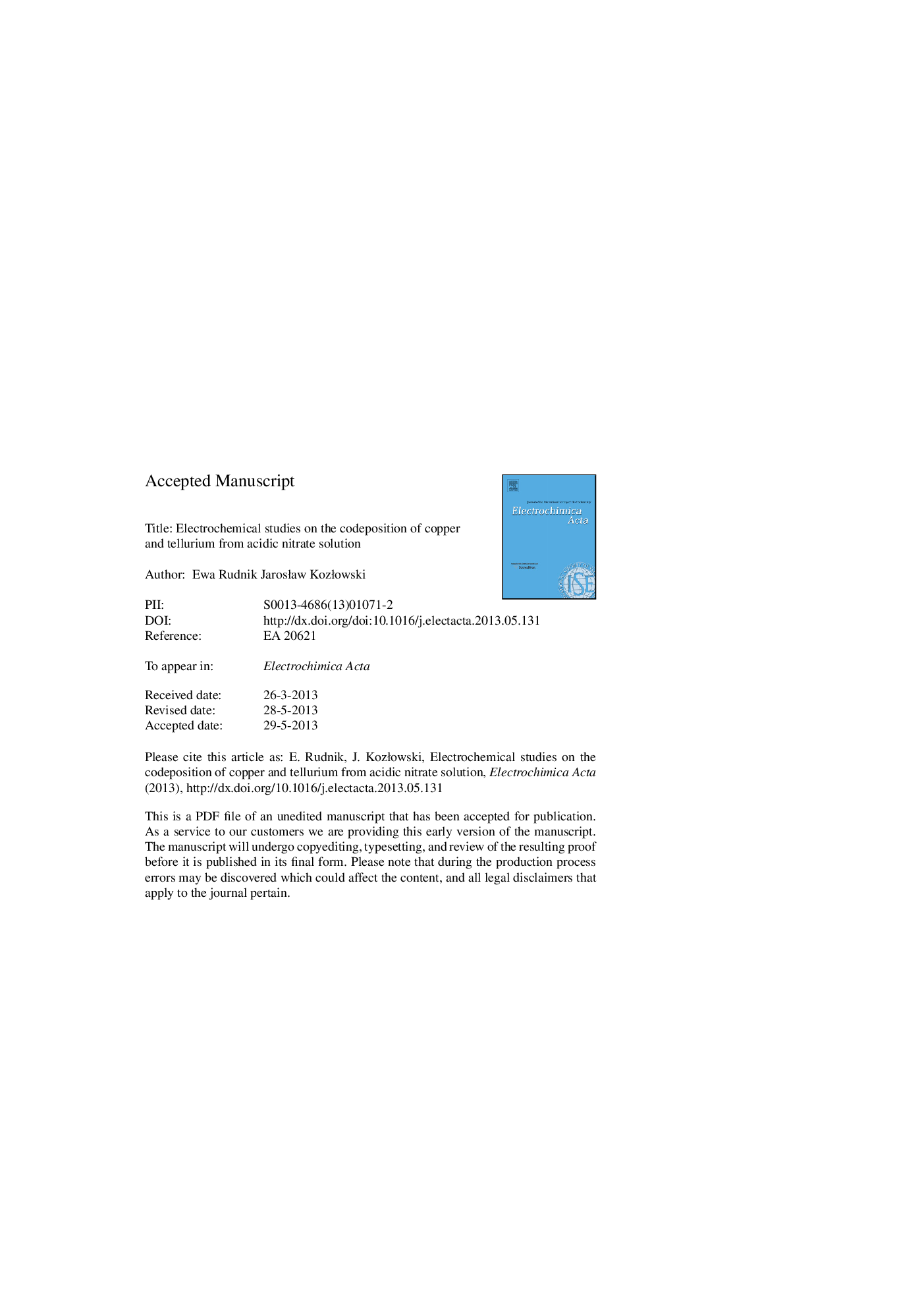| Article ID | Journal | Published Year | Pages | File Type |
|---|---|---|---|---|
| 6616613 | Electrochimica Acta | 2013 | 28 Pages |
Abstract
The paper describes electrochemical studies on the deposition of copper or/and tellurium from nitrate solutions of pH 0.25. Cyclic voltammetry, electrochemical quartz crystal microbalance and potentiostatic measurements showed that two CuxTe phases can be electrodeposited. In the potential range from â100 mV to â500 mV (vs. Ag/AgCl) “low-copper” deposits (â¼Cu/Te ratio of 1.2 ± 0.2) were obtained, while for the potentials below â600 mV “copper-rich” films (â¼Cu/Te ratio of 1.6 ± 0.1) were produced. It was confirmed by anodic responses in the CV reverse scan: oxidation of the “low-copper” phase can correspond to the anodic peak at about 230 mV, while “copper-rich” phase was oxidized at about 180 mV. Thermodynamic arguments for the Cu-Te system suggest that deposition of “low-copper” CuxTe deposits can be obtained during cooperative reduction of Te(IV) with Cu(II) ions, while “copper-rich” phase was attributed to reaction of tellurium(II) species with Cu(I) ions. Gradual shift of the potential toward more negative values resulted in the change of the morphology of the layers from crystalline via dendritic to porous.
Keywords
Related Topics
Physical Sciences and Engineering
Chemical Engineering
Chemical Engineering (General)
Authors
Ewa Rudnik, JarosÅaw KozÅowski,
